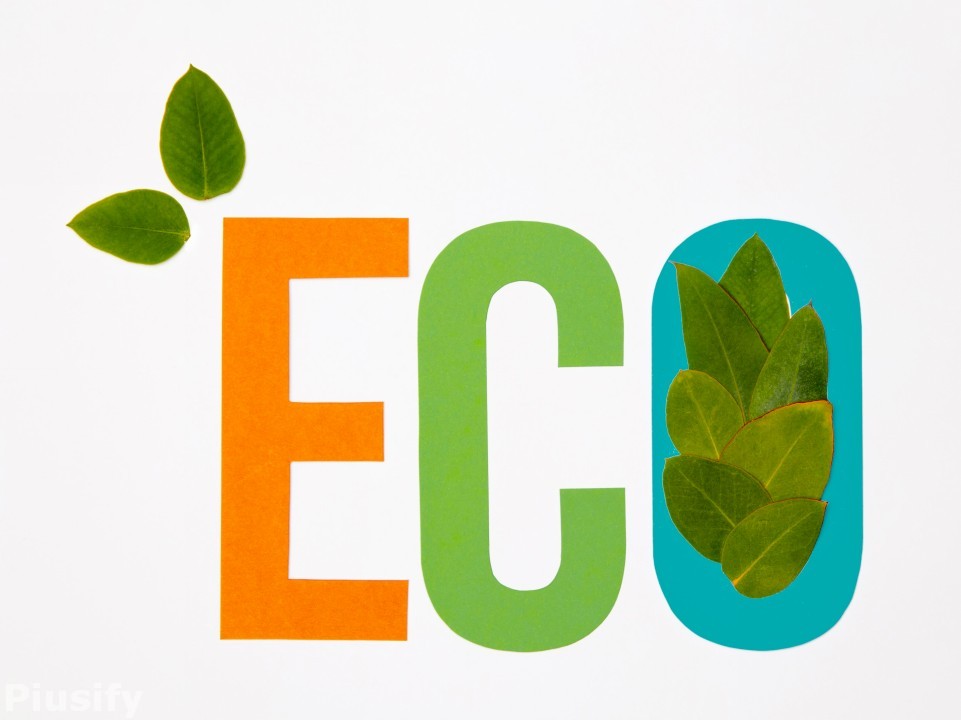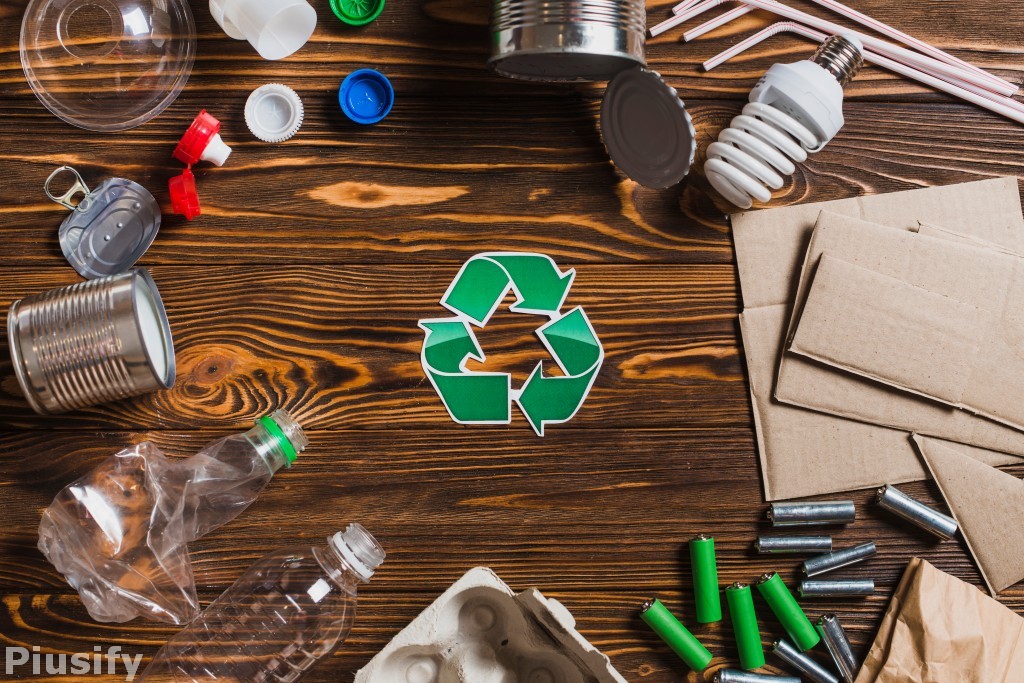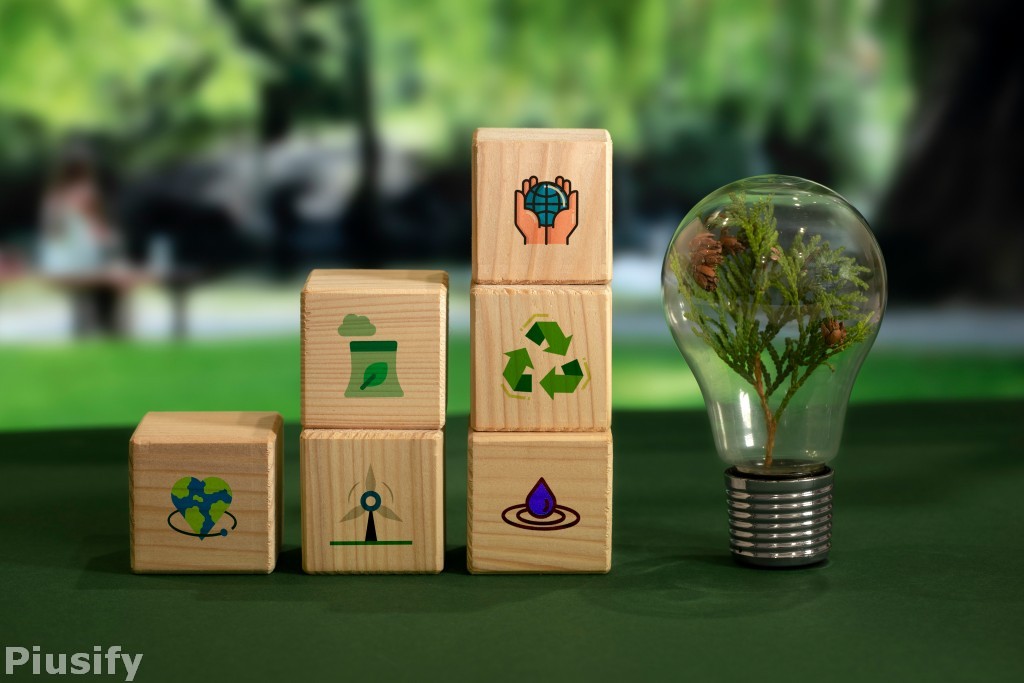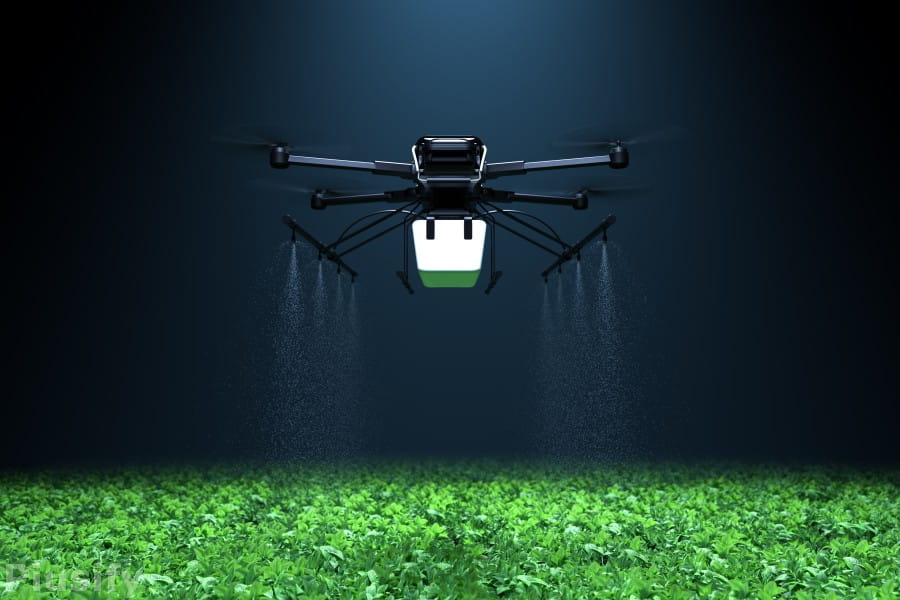10 Essential Tips to Embrace Eco-Friendly Technologies at Home
In a world increasingly grappling with the challenges of climate change and environmental degradation, the shift towards eco-friendly living has never been more crucial. As consumers, we hold the power to make a significant impact by embracing sustainable practices and technologies in our everyday lives.
The good news? Adopting eco-friendly technologies at home doesn’t have to be overwhelming or complicated. From energy-efficient appliances to smart home systems that reduce waste, there are countless ways to create a greener sanctuary while enhancing your living experience.
In this blog post, we will explore 10 essential tips that will empower you to make informed choices, reduce your carbon footprint, and cultivate a more sustainable lifestyle. Join us as we delve into practical strategies to transform your home into an eco-conscious haven, proving that small changes can lead to big results for our planet.
-
Understanding Eco-Friendly Technologies
Understanding eco-friendly technologies is the first step toward making sustainable choices in your home. At its core, eco-friendly technology refers to products and systems designed to minimize environmental impact while maximizing efficiency and sustainability. This can encompass a wide range of innovations, from energy-efficient appliances and solar panels to smart home systems that optimize energy use.
As you explore the world of eco-friendly technologies, it’s essential to grasp the underlying principles that guide these innovations. Many eco-friendly products are built with sustainable materials, reducing reliance on non-renewable resources and minimizing waste. For instance, LED light bulbs consume significantly less energy than traditional incandescent bulbs, resulting in lower electricity bills and a reduced carbon footprint. Similarly, energy-efficient appliances, often labelled with Energy Star ratings, are engineered to perform well while using less water and power, making them a smart choice for both your wallet and the planet.
Moreover, understanding eco-friendly technologies isn’t just about the products themselves but also how they integrate into your daily life. Smart thermostats, for example, learn your habits and adjust heating and cooling accordingly, ensuring energy isn’t wasted when you’re not home. By embracing these technologies, you can cultivate a lifestyle that aligns with your values, prioritizing the health of the planet while still enjoying modern conveniences.
As you begin your journey toward a more sustainable home, take the time to research and understand the various eco-friendly technologies available. This knowledge will empower you to make informed decisions, transforming your living space into a haven of sustainability that benefits both your household and the environment.
-
Assessing Your Home’s Energy Consumption
To truly embrace eco-friendly technologies at home, the first step is to assess your home’s energy consumption. This process not only helps pinpoint areas for improvement, but also empowers you to make informed decisions about adopting sustainable practices. Start by reviewing your utility bills to identify patterns in your energy usage. Are there certain months when your electricity consumption spikes? Understanding these fluctuations can provide insight into which appliances or behaviours contribute to higher energy costs.
Next, conduct a thorough energy audit of your home. This can be done independently or with the help of professionals who specialize in energy efficiency. Begin by checking insulation in your walls, attic, and basement; inadequate insulation can lead to significant heat loss in winter and unwanted heat gain in summer. Pay attention to windows and doors as well simple weather stripping can make a world of difference in maintaining your home’s temperature.
Consider the appliances you use daily. Are they energy-efficient models, or are they older units that consume more power? Look for the ENERGY STAR label, which signifies that an appliance meets energy efficiency guidelines set by the U.S. Environmental Protection Agency. By replacing outdated appliances with eco-friendly alternatives, you can reduce both your carbon footprint and your utility bill.
Finally, take note of your daily habits. Simple changes, such as turning off lights when leaving a room, unplugging devices not in use, and utilizing power strips to manage electronics, can lead to significant energy savings over time. By assessing your home’s energy consumption, you lay the groundwork for implementing eco-friendly technologies that not only benefit the environment but also enhance your overall quality of life. Embrace this opportunity to create a more sustainable home, and watch as your conscientious efforts translate into tangible rewards for both you and the planet.
-
The Benefits of Smart Thermostats
In the quest to embrace eco-friendly technologies at home, one of the most impactful investments you can make is installing a smart thermostat. These advanced devices do more than just control your home’s temperature; they offer a wealth of benefits that contribute to both environmental sustainability and your bottom line.
First and foremost, smart thermostats optimize energy usage, significantly reducing your household’s carbon footprint. Unlike traditional thermostats, which require manual adjustments, smart thermostats learn your schedule and preferences over time. They can automatically adjust heating and cooling based on when you’re home or away, ensuring that energy isn’t wasted when it’s not needed. This intelligent behaviour can lead to energy savings of up to 15% on your heating and cooling bills.
Moreover, these devices often come equipped with features such as remote access and energy usage reports. With the ability to control your home’s temperature from your smartphone, you can make real-time adjustments wherever you are. Did you forget to lower the heat before leaving for vacation? No problem simply pull out your phone and make the change instantly. Additionally, many smart thermostats provide detailed insights into your energy consumption patterns, allowing you to identify opportunities for further savings and make more informed decisions about your energy use.
Another advantage is compatibility with other smart home devices. Many models can integrate seamlessly with smart home ecosystems, allowing for a more cohesive and efficient energy management system. For instance, you can set your thermostat to work in harmony with smart blinds that open and close according to the time of day, further enhancing your home’s energy efficiency.
Finally, many utility companies offer rebates and incentives for homeowners who install smart thermostats, making the initial investment even more appealing. By embracing this technology, you not only contribute to a greener planet but also enjoy long-term financial benefits.
In summary, smart thermostats are a cornerstone of eco-friendly living, providing convenience, cost savings, and the ability to significantly reduce energy consumption. By integrating these devices into your home, you can take a proactive step toward a more sustainable lifestyle while enjoying enhanced comfort and control over your environment.
-
Choosing Energy-Efficient Appliances

Choosing energy-efficient appliances is one of the most impactful steps you can take in your quest to create a more sustainable home. When shopping for new appliances, look for those that feature the ENERGY STAR label, which signifies that they meet strict energy efficiency guidelines set by the U.S. Environmental Protection Agency. These appliances are designed to use significantly less energy than their conventional counterparts, which not only helps reduce your carbon footprint but can also lead to substantial savings on your utility bills.
Consider the long-term benefits of investing in energy-efficient appliances. While the initial cost may be slightly higher, the savings over time can be significant. For example, energy-efficient refrigerators, dishwashers, and washing machines consume less electricity and water, translating to lower utility expenses month after month. Furthermore, many states offer rebates or tax incentives for purchasing these eco-friendly options, which can help offset the upfront costs.
Lfine 4D 16 Lines 360°Self-leveling Laser Levels with Tripod and Suitcase Horizontal And Vertical Professional Laser Level Tool
Price Now: USD 47.32 (Original price: USD 110.24, 57% off)
🔗Click & Buy:
Beyond just energy consumption, energy-efficient appliances often come equipped with advanced features that enhance performance and convenience. Smart thermostats can learn your habits and adjust heating and cooling patterns accordingly, while energy-efficient washing machines may have settings that tailor water usage based on the load size. These innovations not only contribute to sustainability but also elevate your overall home experience.
When making your selection, don’t forget to consider the entire lifecycle of the appliance. Research the manufacturer’s commitment to sustainability, including their practices for sourcing materials, reducing waste, and ensuring responsible disposal at the end of the product’s life. By choosing energy-efficient appliances, you are not only making a sound financial decision but also actively participating in the movement toward a greener planet. Empower yourself and your household to embrace eco-friendly technologies. Every small change can make a significant difference.
-
The Role of Solar Panels in Sustainable Living
Solar panels play a pivotal role in the journey toward sustainable living, transforming the way we harness energy in our homes. As the sun shines down, this remarkable technology captures sunlight and converts it into usable electricity, providing a clean, renewable energy source that significantly reduces our reliance on fossil fuels. By investing in solar panels, homeowners can not only lower their utility bills but also contribute to a healthier planet.
Imagine turning your rooftop into a mini power plant, generating electricity that can power your appliances, charge your devices, and even heat your water. Solar panels work silently and efficiently, providing energy during the day when sunlight is plentiful. Many systems come with battery storage options, allowing you to save excess energy generated for use during cloudy days or at night, ensuring that your home remains powered even when the sun isn’t shining.
Moreover, the environmental benefits of solar panels are substantial. By adopting solar energy, households can drastically reduce their carbon footprint, cutting down on greenhouse gas emissions associated with traditional energy sources. This transition not only supports personal sustainability but also contributes to the global effort to combat climate change.
The installation of solar panels can also increase the value of your property, making it an attractive investment. As more consumers seek homes with eco-friendly features, your solar-equipped home may stand out in the market. Additionally, many regions offer incentives, such as tax credits or rebates, for solar panel installation, making the initial investment more accessible for homeowners.
In summary, integrating solar panels into your home is a powerful step toward embracing eco-friendly technologies. Not only do they provide a sustainable energy source, but they also promote economic and environmental benefits, making them an essential component of modern sustainable living.
-
Incorporating Smart Home Systems for Efficiency
Incorporating smart home systems for efficiency is a game-changer for those looking to embrace eco-friendly technologies in their daily lives. These innovative systems not only enhance convenience but also significantly reduce energy consumption, ultimately leading to a smaller carbon footprint. Imagine this: with a simple voice command or a tap on your smartphone, you can manage your home’s lighting, heating, and appliances, optimizing their use to align with your lifestyle and sustainability goals.
Smart thermostats are a prime example of how technology can facilitate energy efficiency. By learning your habits and preferences, they automatically adjust the temperature in your home, ensuring that you’re not heating or cooling an empty space. Additionally, they can be programmed to operate during off-peak hours when energy demands are lower, thus saving you money and reducing strain on the power grid.
Smart lighting systems further enhance energy efficiency by allowing you to customize the brightness and colour of your lights, reducing electricity usage based on your needs. Motion sensors can automatically turn lights on or off, ensuring that energy isn’t wasted in unoccupied rooms. Imagine returning home to a well-lit space without having to flip a switch. Your lights adjust automatically based on your presence!
Moreover, integrating smart appliances into your home can lead to significant energy savings. From refrigerators that monitor their contents and suggest recipes to washing machines that optimize water and electricity use based on the load, these devices are designed to be both functional and eco-conscious.
To truly maximize the benefits, consider connecting these devices to a central smart hub. This enables you to monitor and manage energy consumption in real time, providing insights into your usage patterns and helping you make informed decisions about when to run certain appliances or when to cut back.
By incorporating smart home systems, you not only enhance your living experience but also take impactful steps toward a more sustainable lifestyle. The ease of use, combined with the environmental benefits, makes it easier than ever to be a conscious consumer while enjoying the conveniences of modern technology. Embrace these smart solutions and watch as your home transforms into an efficient, eco-friendly haven.
-
Water-Saving Technologies for Everyday Use

Water scarcity is a pressing issue that affects communities worldwide, making the adoption of water-saving technologies not just a personal choice but a vital necessity. Embracing these eco-friendly innovations in your home can significantly reduce your water consumption while maintaining comfort and convenience. Here are some effective solutions to consider for everyday use.
Start with low-flow fixtures, which can be easily installed in your kitchen and bathrooms. Showerheads and faucets designed to reduce water flow can save gallons of water without sacrificing performance. Look for models that are Water Sense certified; they meet strict efficiency criteria while ensuring a satisfying experience.
Toilets are another major source of water use in homes. Upgrading to a dual-flush or high-efficiency toilet can drastically cut down water usage per flush. These models use less water for liquid waste and provide a stronger flush for solid waste, helping you save both water and money on your utility bills.
In the garden, consider implementing drip irrigation systems or soaker hoses that deliver water directly to the roots of your plants. These systems minimize evaporation and runoff, allowing your garden to thrive while using significantly less water than traditional sprinklers.
Rain barrels are another fantastic addition to your eco-friendly toolkit. By capturing rainwater from your roof, you can collect and store natural water for watering plants or washing your car. This not only conserves municipal water but also helps manage storm water runoff, which is beneficial for the environment.
Lastly, be mindful of your daily habits. Simple changes, like turning off the tap while brushing your teeth or running full loads in the dishwasher and washing machine, can have a cumulative effect on water savings. By integrating these water-saving technologies and practices into your daily routine, you can contribute to a more sustainable future while enjoying the benefits of reduced water bills and a healthier planet.
-
The Importance of Sustainable Lighting Solutions
When it comes to transforming your home into an eco-friendly sanctuary, one of the most impactful changes you can make is upgrading your lighting solutions. The importance of sustainable lighting cannot be overstated; it not only reduces your energy consumption but also diminishes your carbon footprint, contributing to a healthier planet. Traditional incandescent bulbs, while once a staple in many households, are notorious for their inefficiency and high energy usage. In contrast, sustainable lighting options, such as LED and CFL bulbs, consume significantly less energy and last much longer, ultimately saving you money on your electricity bills.
LED bulbs, for example, use up to 75% less energy than their incandescent counterparts and can last up to 25 times longer. This means fewer replacements and less waste in landfills. Moreover, many LED options now come in a variety of colour temperatures and styles, allowing you to create the perfect ambiance in any room while still being kind to the environment.
In addition to energy-efficient bulbs, consider integrating smart lighting systems into your home. These innovative solutions allow you to control your lighting remotely, set schedules, and even adjust brightness levels based on your needs, further enhancing energy efficiency. For instance, utilizing motion sensors can ensure that lights are only on when a room is occupied, reducing unnecessary energy waste.
Choosing sustainable lighting solutions is not just a smart financial decision; it’s a crucial step towards a more sustainable lifestyle. By making this simple switch, you are actively participating in the global movement to combat climate change, all while enjoying a beautifully lit home. Remember, every little change counts, and sustainable lighting is a bright way to lead the charge towards a greener future.
-
Recycling and Upcycling Old Electronics

When it comes to embracing eco-friendly technologies at home, recycling and upcycling old electronics can play a pivotal role in reducing waste and promoting sustainability. With the rapid pace of technological advancement, many of us find ourselves with outdated gadgets, be it a smartphone that no longer holds a charge, a laptop that has seen better days, or that old television gathering dust in the corner. Instead of tossing these items into the trash, consider the myriad of ways to give them a second life.
Recycling is the first step in this journey. Many electronics contain valuable materials such as metals, plastics, and glass that can be reclaimed and repurposed. Look for local e-waste recycling programs that ensure your old devices are disposed of responsibly. These programs can help prevent harmful substances from leaching into the environment while also recovering precious resources that can be used in the production of new devices. Check for certifications and partnerships with certified e-waste recyclers to guarantee that your electronics are being processed appropriately.
But recycling is just one part of the equation upcycling takes your old electronics to a whole new level. Upcycling is about creatively repurposing your gadgets into something new and useful. For example, that old smartphone can be transformed into a digital photo frame, while a retired laptop could become a dedicated media server or a home automation hub. You might even consider converting broken headphones into a stylish plant holder or using the components from a defunct printer to create unique art pieces.
There are countless tutorials and creative ideas available online to inspire your upcycling journey. Not only does this practice reduce waste, but it also allows you to express your creativity and resourcefulness. By embracing both recycling and upcycling, you contribute to a circular economy, where products are designed to be reused and repurposed rather than discarded. In doing so, you not only minimize your environmental impact but also inspire others in your community to think differently about their old electronics.
Incorporating these practices into your eco-friendly lifestyle is not just beneficial for the planet; it’s an opportunity to rethink the value of the items we often take for granted. So, the next time you consider replacing your electronics, ask yourself: how can I recycle or upcycle this device? Your creativity and conscious choices can lead to a more sustainable home and a healthier planet for future generations.
-
Eco-Friendly Options for Home Heating and Cooling
When it comes to maintaining a comfortable home environment, the choices you make regarding heating and cooling systems can have a significant impact on both your energy consumption and the planet. Embracing eco-friendly options for home heating and cooling not only helps to reduce your carbon footprint, but can also lead to long-term cost savings on your energy bills.
Start by considering energy-efficient heating systems, such as heat pumps, which can both heat and cool your home using significantly less energy than traditional systems. These devices work by transferring heat rather than generating it, making them an environmentally friendly alternative. For those in milder climates, ductless mini-split systems are another excellent choice, providing targeted heating and cooling with minimal energy waste.
In addition to choosing the right systems, optimizing your home’s insulation is crucial for energy efficiency. Proper insulation keeps the heat in during winter months and the cool air in during summer, reducing the workload on your heating and cooling systems. Look for eco-friendly insulation materials, such as cellulose or sheep’s wool, which are not only effective but also made from sustainable resources.
For those looking to go a step further, consider integrating smart home technology to monitor and adjust your heating and cooling systems. Smart thermostats can learn your schedule and preferences, automatically adjusting temperatures to maximize comfort while minimizing energy use. This means that when you leave the house or go to bed, your system can lower energy usage without sacrificing your comfort.
Finally, don’t overlook the benefits of passive heating and cooling techniques. Simple changes, like strategically placing window coverings, using ceiling fans, and opting for energy-efficient windows, can dramatically improve your home’s energy efficiency. By allowing natural light to warm your space during the day and blocking it out at night, you can create a comfortable living environment while minimizing reliance on artificial heating and cooling methods.
By exploring these eco-friendly options for home heating and cooling, you can transform your living space into a more sustainable haven that aligns with your values and supports the health of our planet. Every small change contributes to a larger movement toward environmentally responsible living, and your home can be the perfect starting point.
-
Sustainable Materials for Home Renovations

When it comes to home renovations, the choice of materials can significantly impact both the environment and the aesthetics of your space. Embracing sustainable materials is not just a trend; it’s a commitment to reducing your carbon footprint while enhancing the beauty and functionality of your home. Sustainable materials are sourced and manufactured in ways that minimize environmental harm, promote energy efficiency, and often prioritize the well-being of those who live and work in these spaces.
Consider opting for reclaimed wood for flooring or cabinetry. This not only gives your home a unique and rustic charm but also helps to reduce the demand for new timber, preserving forests and their ecosystems. Bamboo is another fantastic alternative, known for its rapid growth and renewability. It can be used for various applications, from flooring to furniture, and adds a touch of modern elegance.
For countertops, look into recycled materials such as glass or quartz made from repurposed components. These surfaces are not only stunning but also durable and low-maintenance, making them practical choices for busy households. If you’re in the market for tiles, choose those made from recycled content or natural stone, which can offer a timeless appeal while being kinder to the planet.
Paints and finishes are critical as well. Opt for low-VOC (volatile organic compounds) or zero-VOC options to improve indoor air quality and reduce harmful emissions. There are now numerous brands that offer beautiful colours and finishes without compromising your health or the environment.
Lastly, integrating sustainable insulation materials, such as sheep’s wool or recycled denim, can enhance energy efficiency in your home while ensuring it remains cozy and inviting. By choosing sustainable materials for your renovations, you not only create a healthier living environment but also contribute to a more sustainable future for our planet. Embrace eco-friendly technologies and make informed choices that reflect your commitment to sustainability your home, and the Earth, will thank you!
-
Tips for Reducing E-Waste
Reducing e-waste is an essential step towards a more sustainable lifestyle, especially as our reliance on technology continues to grow. E-waste, or electronic waste, encompasses discarded electrical or electronic devices, which can contribute significantly to environmental pollution if not properly managed. Here are some practical tips to help you minimize your e-waste footprint at home:
- **Buy Refurbished Products**: Consider purchasing refurbished electronics instead of brand new items. These products have been restored to full functionality and often come at a lower price, all while reducing demand for new manufacturing and keeping perfectly good devices out of landfills.
- **Repair Instead of Replace**: Before discarding a malfunctioning device, explore repair options. Many local shops specialize in fixing electronics, and online tutorials can guide you through simple repairs. Not only is this cost-effective, but it also extends the life of your devices.
- **Recycle Responsibly**: When it’s time to let go of old electronics, ensure you recycle them properly. Look for local e-waste recycling programs or drop-off events that adhere to environmentally responsible practices. Many manufacturers also offer take-back programs to safely dispose of their products.
- **Donate Usable Devices**: If your device is still in working condition, consider donating it to a local charity, school, or community centre. Many organizations are eager to receive functional electronics that can benefit those in need, reducing e-waste while supporting your community.
- **Educate Yourself on E-Waste**: Understanding the impact of e-waste on the environment is crucial. Familiarize yourself with the materials that make up your electronics and their potential hazards. This knowledge empowers you to make informed decisions about your purchases and disposal methods.
- **Be Mindful of Purchases**: Before buying new gadgets, ask yourself if you truly need them. Opt for multifunctional devices that can replace multiple single-use items. This not only saves money but also reduces the overall number of devices you own, ultimately decreasing potential e-waste.
- **Keep Devices Up-to-Date**: Regularly updating software on your devices can enhance performance and longevity. This can prevent the need for premature device replacement, as updates often resolve bugs and improve functionality, extending the life of your electronics.
By integrating these tips into your daily routine, you can play a significant role in reducing e-waste. Each small action contributes to a larger movement toward sustainability, helping to protect our planet for future generations while embracing eco-friendly technologies in your home.
-
Supporting Green Companies and Products
Supporting green companies and products is not just a trend; it’s a powerful way to make a meaningful impact on the environment. When you choose to buy from businesses that prioritize sustainability, you’re voting with your wallet for a healthier planet. Look for brands that demonstrate a commitment to eco-friendly practices, whether it’s through using renewable materials, reducing waste, or implementing ethical sourcing methods.
One way to identify these green companies is by searching for certifications such as Fair Trade, USDA Organic, or B Corp, which signify adherence to rigorous environmental and social standards. These labels can offer peace of mind, assuring you that your purchasing choices support responsible practices.
Moreover, investing in eco-friendly products often means you’re choosing higher quality items that are built to last. Many green companies focus on durability and sustainability over disposable consumerism, resulting in products that not only serve their purpose but do so while reducing your carbon footprint. For example, opting for reusable kitchenware, biodegradable cleaning agents, or energy-efficient appliances not only helps the environment but can also lead to long-term savings.
Additionally, supporting local green companies can amplify your impact. By choosing to buy from businesses in your community, you help reduce transportation emissions and support the local economy. This creates a ripple effect, encouraging more businesses to adopt sustainable practices and promoting a culture of environmental responsibility.
In summary, being mindful of where you spend your money is a crucial step in embracing eco-friendly technologies at home. By supporting green companies and products, you’re contributing to a sustainable future and inspiring others to do the same. Every purchase is an opportunity to align your values with the brands you choose, fostering a healthier planet for generations to come.
-
Educating Your Family on Eco-Friendly Practices
Educating your family on eco-friendly practices is one of the most impactful steps you can take toward fostering a sustainable household. It’s not just about implementing changes; it’s about creating a culture of environmental awareness that resonates with every member of your family, from the youngest to the oldest.
Start by holding family discussions about the importance of sustainability. Explain how our everyday choices affect the planet, whether it’s the energy we consume, the waste we produce, or the products we buy. Use relatable examples that connect with their interests, like discussing how recycling can reduce pollution or how using energy-efficient appliances can save money on utility bills.
Incorporate hands-on learning experiences to make eco-friendly living more tangible. Engage your kids in activities like starting a small vegetable garden, which teaches them about food production and the benefits of eating locally. Or, host a family movie night featuring documentaries on climate change, wildlife conservation, or innovative green technologies. These activities provide a fun way to spark curiosity and inspire dialogue about environmental issues.
Lead by example; your actions can be the most powerful teaching tool. Use reusable bags for shopping, reduce water usage, and opt for sustainable products. Encourage your family to join you in these habits, turning them into daily rituals rather than chores. Celebrate small victories together, such as reducing household waste or successfully implementing a recycling routine.
Finally, make eco-friendly practices a part of your family values. Create a family pledge to reduce your carbon footprint and set specific, achievable goals, like committing to go car-free one day a week or aiming for zero plastic waste in your home. By involving everyone in the decision-making process and encouraging their input, you empower each member to take ownership of their eco-friendly journey.
As you educate your family on these practices, remember that patience is key. Change takes time, and fostering a sustainable mind-set is an ongoing journey. With shared knowledge and collective effort, you can create a home that not only nurtures the planet but also installs lifelong eco-conscious habits in your loved ones.
-
Monitoring and Adjusting Your Eco-Friendly Practices Over Time
As you embark on your journey towards a more sustainable home, it’s essential to recognize that eco-friendly living is not a onetime effort but an ongoing commitment. Monitoring and adjusting your eco-friendly practices over time is crucial to ensure that your efforts are effective and continuously improving. Start by regularly assessing the impact of your current technologies and habits. Are they delivering the energy savings or waste reduction you anticipated?
Consider keeping a journal or digital log of your energy consumption, waste production, and any changes you’ve made. This will not only help you track your progress but also highlight areas where you can further enhance your eco-friendly practices. For instance, if you’ve switched to LED lighting or installed smart thermostats, take note of your energy bills over several months to see if these changes are making a significant difference.
Additionally, stay informed about new developments in eco-friendly technologies. The green tech landscape is rapidly evolving, with innovations emerging regularly that can help you minimize your environmental footprint even further. For example, you might find more efficient solar panels, advanced water-saving appliances, or smarter home automation systems that enhance energy management.
Read more: The role of Technology in achieving sustainable living.
Don’t hesitate to reassess and recalibrate your strategies. If certain practices aren’t yielding the desired results, explore alternatives. Engaging with your local community can also provide insights, join workshops, attend sustainability fairs, or connect with online forums where like-minded individuals share their experiences and tips.
By staying proactive and adaptable, you’ll not only enhance your eco-friendly setup but also inspire those around you to consider their environmental impact. Every small adjustment contributes to a more sustainable future, making your home a beacon of eco-conscious living.
As we wrap up our exploration of eco-friendly technologies, we hope these 10 essential tips inspire you to make sustainable choices in your home. Embracing these innovations not only helps reduce your carbon footprint, but also promotes a healthier living environment for you and your loved ones.
From energy-efficient appliances to smart home systems that optimize resource usage, every small change contributes to a larger impact on our planet. By incorporating these eco-conscious practices into your daily routine, you can lead by example and encourage others to join the movement toward sustainability. Let’s take these steps together, creating a brighter, greener future for generations to come!















6 comments